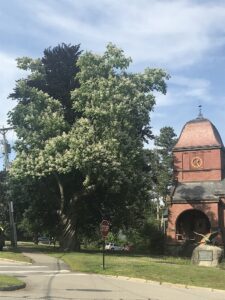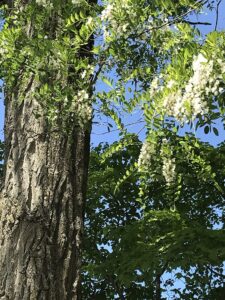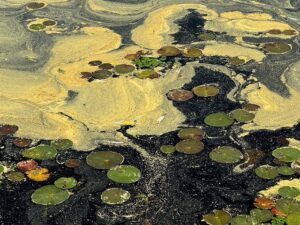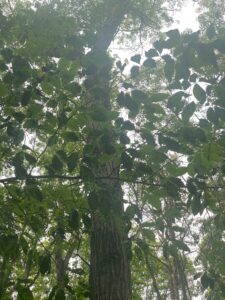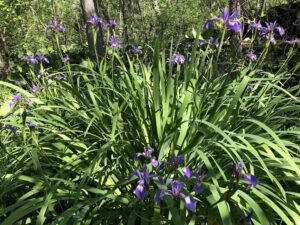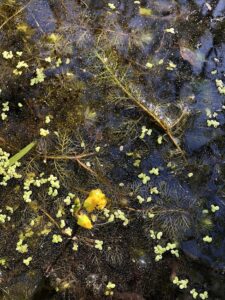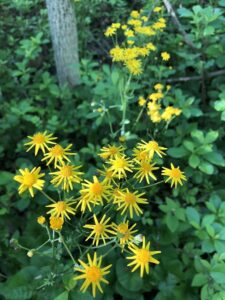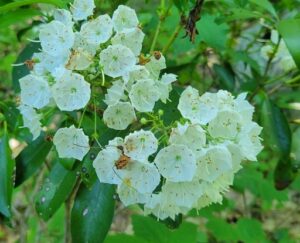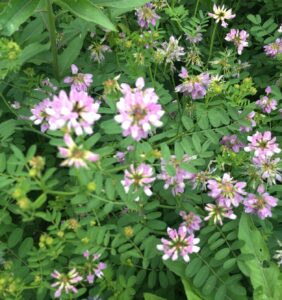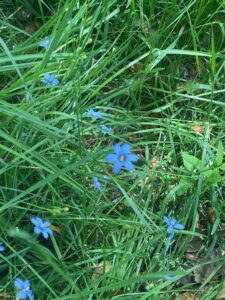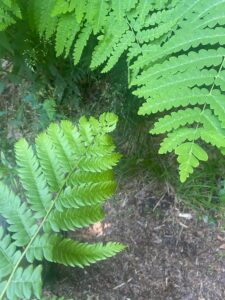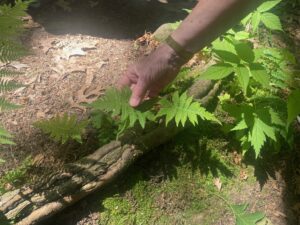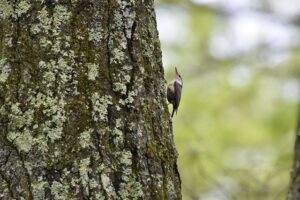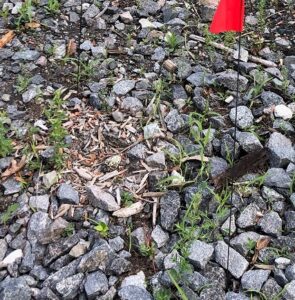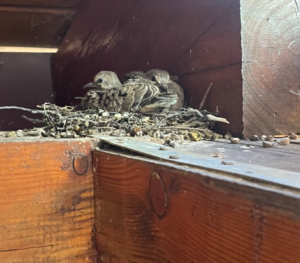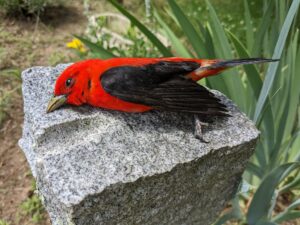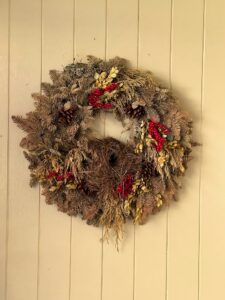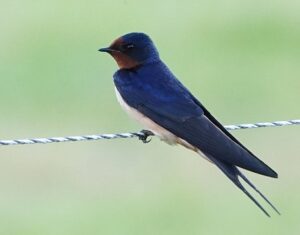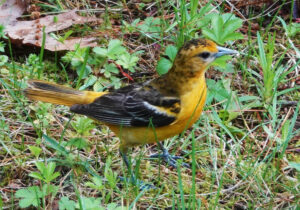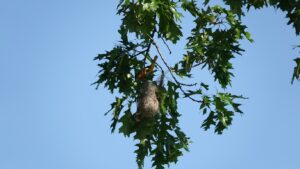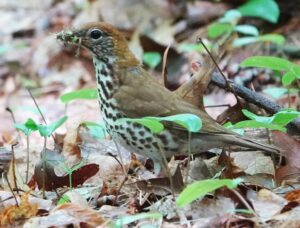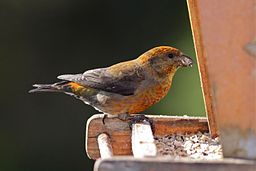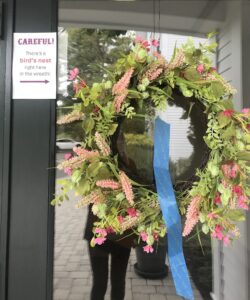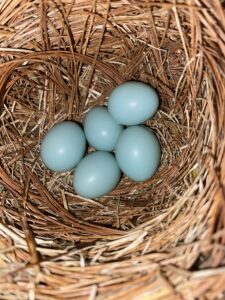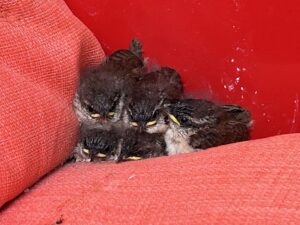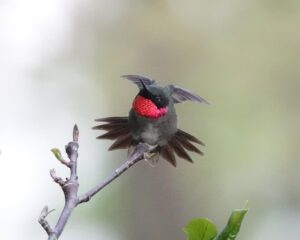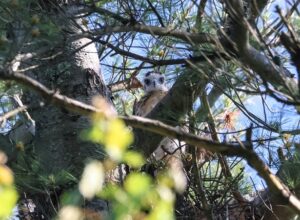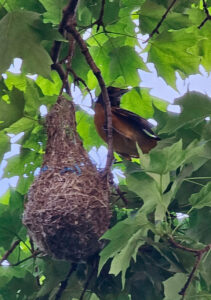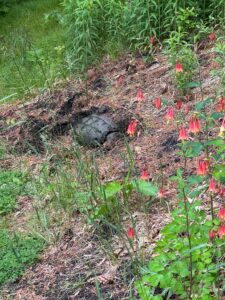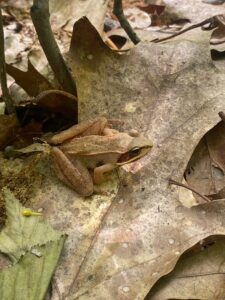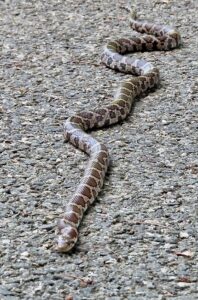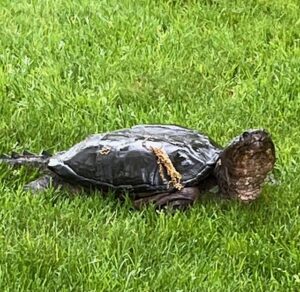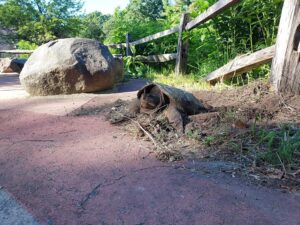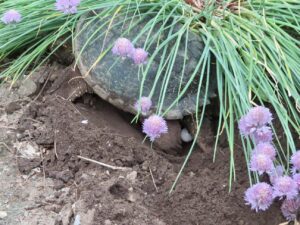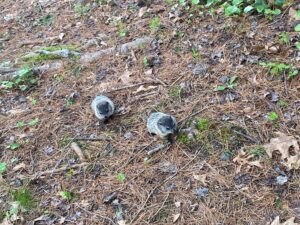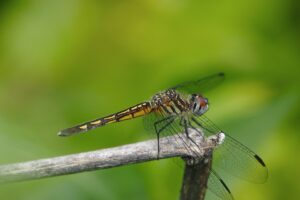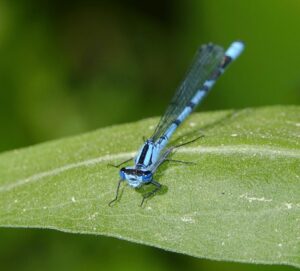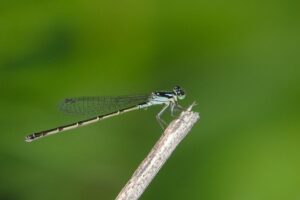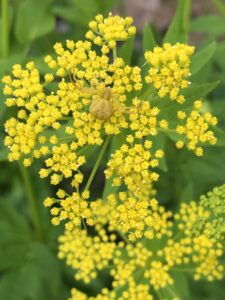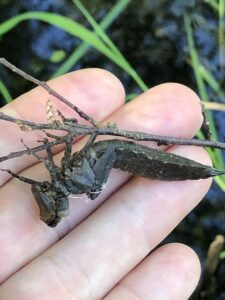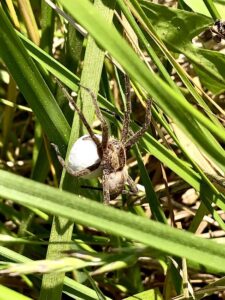Written by Gwyn Loud for the Lincoln Land Conservation Trust. She welcomes your sightings and questions at 781-259-8690 or gwynloud555@gmail.com
There have been many beautiful days over the last few weeks, with some cool nights dipping into the 40s. A heat wave is arriving as I write, with temperatures expecting to reach near 100℉, perhaps breaking records. Summer will arrive officially on June 20, the solstice, the day with the most hours of daylight in the year. Thereafter, the days begin to shorten, which always seems paradoxical, since summer is just beginning.
We have not had much rain in June so far, with the exception of a short but strong storm on the afternoon of June 14, bringing a deluge and even hail. NOAA is forecasting this to be a busier hurricane season than usual, due to factors including La Nina and climate change, which warms ocean waters, where hurricanes begin.
Plant growth is lush after the spring rains, and the black locust trees bloomed more profusely than I ever remember. Now catalpa is flowering, including the iconic twisted tree by the Library. (It blooms later than some catalpas). The pollen from white pines has finished coating everything; artist Nancy Selvage found beauty in the pollen patterns on Valley Pond. On a sober note, American beech trees are in serious trouble due to beech leaf disease, caused by microscopic roundworms which prevent the leaves from photosynthesizing.
The berries on my mulberry tree are still green, but already the squirrels are chattering with delight as they climb the tree to feast, and soon I will hear the calls of Baltimore oriole families enjoying the ripe fruit. Maple-leaf viburnum and mountain laurel flowers have added beauty to woodlands, and multiflora rose continues to show white blossoms and vigorous growth along roadsides and field edges. Daisies, fleabane, hawkweed, herb Robert, common yarrow, and purple crown-vetch are just some of the wildflowers now blooming. Several species of ferns are carpeting the woodland floor and damp field edges. In wetland habitats blue flag iris bloomed in May, and golden ragwort and common bladderwort can be found, the latter a carnivorous plant which has no roots and uses the little bladders in its leaves to trap tiny prey underwater such as daphnia and mosquito larvae. Pond lilies bring spots of color to the surface of the water.
It is hard to keep up with determined weeds such as bittersweet, poison ivy, and bedstraw, of which there are several species. Bedstraw is prolific in many hay fields as well as in a sprawling vine-like species called cleavers, which has sticky bristles on the leaves and clings to my clothes.
Bird song has diminished and migration is behind us, but we hear the begging of baby birds and the calls and songs of summer residents in the woods such as Eastern wood pewees, wood thrushes, and ovenbirds. The chickadees and tufted titmice near my house scold me if the feeder is empty. Many songbirds are now raising second clutches of young, including bluebirds in boxes all over town. I enjoy watching ruby-throated hummingbirds sip nectar from garden plants such as catmint and foxglove, then come to the sugar-water feeder, jockeying for position. Nearly all the hummingbirds at the feeder look like females with white throats, but some are probably fledgling males; they will not show signs of a ruby throat until the fall. Many people have enjoyed watching birds nesting, sometimes in odd places. Carolina wrens made nests in a bike helmet, in a flower pot by a porch couch, a hanging flower pot, and in a wreath. House finches also nested in several wreaths, including one by the front door of St. Anne’s Church. The Tack Room had a dilemma when it was discovered that mourning doves had managed to get into the patio and build a nest, with young, high on a beam. The Tack room staff kindly left a screen panel open so that the adults could get access to the nest until the young fledged. A pair of killdeer chose to nest on the ground, as they do, near the porta-potty by the MBTA train tracks. Not the best location! Conservation staff put up little stakes to protect the nest. Barn swallows continue to nest in a large barn near me, carrying on in spite of disruption and work being done in the barn.
Other avian news came from Mathias Bitter, who heard red crossbills flying overhead more than once. This is an irruptive species, very nomadic, and hard to census. The name comes from the shape of its “crossbill”, designed to open conifer cones to procure the seeds. Fish crows are turning up in Lincoln, expanding their range inland. They look very similar to our usual American crows and but more numerous along the coast and farther south,. They can be primarily distinguished by a nasal “eh-eh” call. On a bird walk in Farm Meadow, participants were happy to see a pair of indigo buntings and a few bobolinks, although not as many as in the past.
Many people have sent me photos of snapping turtles, which have been laying eggs over the past few weeks. They dig holes with their strong back claws, then lay the leathery white eggs, which look like ping-pong balls, cover the eggs with soil, and head back to the pond. Naturalist Mary Holland writes, “The temperature of the nest determines the sex of the hatchlings. Warmer nests tend to produce females, while cooler nests produce males.” Many eggs are dug up and eaten by predators such as raccoons, skunks, foxes, or crows, but those which survive will hatch either in September or next spring. A large snapper at Drumlin Farm chose to lay her eggs in one of the busiest spots, by the entrance to the Nature Center! Observers have also seen painted turtles laying eggs. Sadly, quite a few dead turtles, hit by cars, have been found on roads. The dead turtles included two spotted turtles, which are not very common. If you you are driving and see what looks like a stone or rock in the road, be sure to avoid hitting it, as it might be a turtle. Open the link below to read more about turtles and what to do if you find one. Other reptiles seen recently include snakes – many garter snakes, and a couple of milk snakes.
American toads and frogs of various species are very evident, both in ponds, along woodland trails, or in soggy backyard grass. An observer counted sixteen frogs sunning one morning in the pond in Pierce Park. That is a good spot to hear green frogs giving their banjo-like “plunk” call as they leap into the water. On a still night I can hear bullfrogs singing a deep “jug-a-rum” from Valley Pond in the distance.
This seems to be the year of the rabbit in Lincoln, with people commenting on seeing more than usual. I watch them eating clover on my lawn, sometimes alongside a woodchuck. My neighbor spotted two very young woodchucks, and a family has a burrow beneath my little barn. Vegetable garden beware! Chipmunks are also prolific, making holes and tunnels even in the hard-pan gravel driveway. White-tailed deer abound, as usual, and observers have reported muskrats, beaver, and coyotes. Carol Roede continues to see a bobcat and otters sporadically on her trail cam. Walkers at Heywood Meadow saw an all-white squirrel; since it had a gray muzzle and dark eyes is was leucistic, not albino. Red fox kits, which have charcoal gray fur for the first month, are growing new fur. As Mary Holland explains, “At about five weeks of age Red Fox kits begin to lose their dark natal coat and grow a new one. Once again, this second coat is not the distinct red coat of an adult, but rather a sandy-colored coat which matches the sandy soil of the den site. Now that they are spending time outside the den, but are still defenseless, camouflage is crucial. After five weeks or so, in early June, outer red guard hairs begin to grow through the sandy coat and by the end of June the kits display the bright red coats associated with adult Red Foxes.”
Butterflies are visiting flowers and we all hope to see more monarchs this year than last. I saw my first earwig of the season a few days ago. Check out the flourishing pollinator gardens planted by the LLCT around town to observe pollinators, especially bees, in action. Damsel flies and dragonflies lay their eggs and metamorphose into larvae in water. The larvae may take from a month to five years underwater, molting skin as they grow. When they are ready to emerge to an adult, they climb out of the water, clinging to something solid, such as a stem, and leave the final skin behind before flying off. Sometimes one finds these papery empty skins, called excuviae, by the water’s edge. Observers are reporting a splendid number of fireflies after dark. Spiders are plentiful too and the crab spider is particularly skilled at camouflage (see photo). Wolf spiders carrying eggs sacs are a frequent sight when we are digging in the garden.
Looking skyward, the full Strawberry Moon will rise on June 22, and on June 27 the moon will be at perigree, its closest point to the Earth, only 229,463 miles away!
Links


